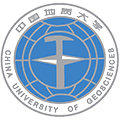Study in China University of Geosciences(Beijing) About China University of Geosciences(Beijing) & Study in cugb
About China University of Geosciences(Beijing)
China University of Geosciences(Beijing) traces its roots to Beijing College of Geology, founded in 1952 as a result of the merger of the geological departments from Peking University, Tsinghua University, Tianjin University, and Tangshan Railway College. Early success led to its being named one of the nation’s 64 “key colleges and universities.” In 1975, the school was obliged to move to a new campus in Wuhan. In 1978, the graduate faculties relocated in Beijing under the support of Mr. Deng Xiaoping, the leader of the People’s Republic of China.
In 1987, the Ministry of Education approved a plan for China University of Geosciences to develop two tertiary institutions in Beijing and Wuhan respectively, both of which have independent legal personalities. China University of Geosciences in Beijing is among the first group of China’s higher level universities designated for the state key construction of the “211” project and is one of the first 33 universities in China approved to set up graduate schools as well. In February 2000, China University of Geosciences in Beijing (heretofore “CUGB”), previously managed by the Ministry of Land and Resources, was put under the management of the Ministry of Education. In March 2005, CUGB and China University of Geosciences (Wuhan) became independent educational entities. Finally, in September 2006, CUGB was established as a joint responsibility of the Ministry of Education and the Ministry of Land and Resources.Since its foundation in 1952, China University of Geosciences in Beijing has experienced an unusual course of development: creation, expansion, re-location, reconstruction, and revitalization.
At present, the university boasts nine members of the Chinese Academy of Sciences on its staff. Out of 40,000 graduates, 24 alumni have been elected to either the Chinese Academy of Sciences or the Chinese Academy of Engineering, and more than 200 alumni have been singled out as “model workers” by provinces or ministries.
As a multi-disciplinary national key university, CUGB is one of China’s main centers for educating geological researchers and professionals of all sorts. It has evolved an educational program that balances sciences, technology, arts, management, economics and law—one which emphasizes a connection between education and geology, natural resources, environment and geological engineering. CUGB has 16 colleges with a total of 47 undergraduate programs and 118 graduate programs for a master’s degree, 37 doctoral programs, 16 fields of Master of Engineering, and 6 post-doctoral research stations. At present there are more than 12,000 students enrolled with a teaching and research staff comprised of 1200.

